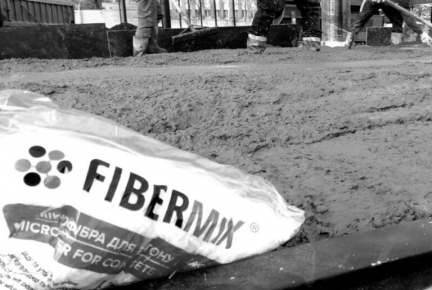
What is fiber-reinforced concrete, how it is made and where it is used
Recently, a new composite material has spread, which is used in the construction of industrial, commercial, agricultural and residential buildings. Cement-sand mortar with reinforcing elements is called fiber-reinforced concrete. As an additive, fibers from polypropylene, glass, metal or basalt are used.
Contents
- Why fiber is needed for concrete
- Varieties of fiber fibers
- The Benefits of Using Fibrobeton
- Grid preparation technology
- Use of fiber and its proportions
The fiber makes the mixture plastic by adding the characteristics of the material of the threads: heat and sound insulation, resistance to temperature fluctuations, ultraviolet radiation, acids, alkalis and other aggressive chemicals. Additives increase the tensile and bending strength of concrete, prolong its service life, and protect against mechanical damage. Fiber-reinforced concrete is less subject to shrinkage and the formation of microcracks.
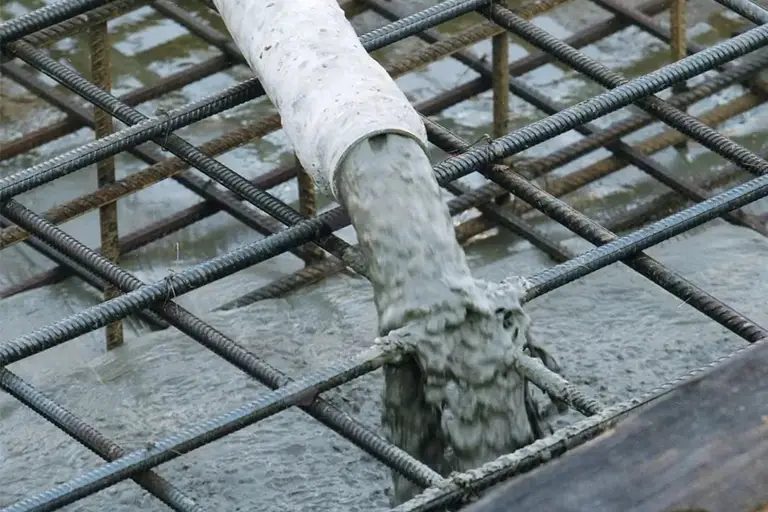
Why do we need fiber for concrete
Although pure concrete mortar turns into a strong material when it hardens, it has disadvantages:
- prone to cracking due to low tensile and flexural strength;
- the solution exfoliates after application to the surface;
- limited period of use;
- lack of plasticity;
- as an architectural object increases, its strength decreases;
- shrinks when dry.
Due to these features, the material could not be used for some construction work. Reinforcement of structures with steel bars or meshes gave a positive result, but did not solve the problem as a whole. Experiments with composite materials have improved the quality of products. The invention of polymer fiber opened up new possibilities in construction.
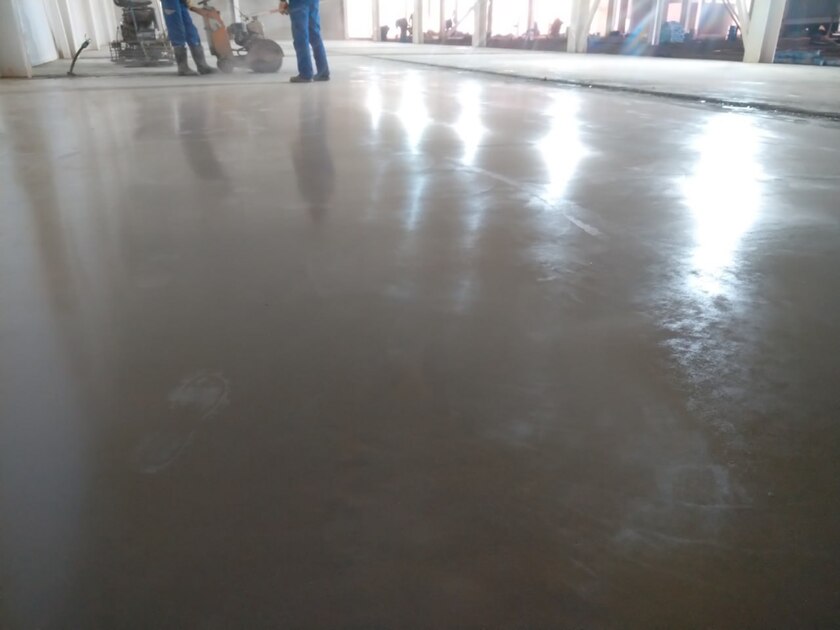
Varieties of fiber fibers
Reinforcing additives differ in composition:
- carbon;
- glass;
- basalt;
- metal;
- polyolefin
Fiber-reinforced concrete with carbon fiber improves the performance of structures. Chopped threads are obtained from carbon by heat treatment. The material is not afraid of acids, alkalis, corrosion, temperature fluctuations. Among all the additives, carbon fiber stands out for its increased elasticity. The only downside – carbon filaments are not cheap.
Glass fiber is produced on special equipment by stretching inorganic glass. The properties of the additive and its interaction with the concrete mixture depend on the chemical compounds in the raw materials and the method of manufacture. The final characteristics of the material are affected by the length, shape and diameter of the fibers. When using glass, increased plasticity and intolerance to alkalis are taken into account.
Basalt fiber-reinforced concrete is made from molten mineral. Raw materials of volcanic origin triple the strength of the cement-sand mixture. The threads protect the structure from aggressive chemicals, burning, and mechanical damage. Basalt is used for sound and heat insulation. The material is used for the construction of the basement floors of high-rise buildings, large special facilities, road slabs, fountains.
Steel fibers can be straight or wavy. The threads are formed from molten metal or mechanically cut wire. Reinforcing elements strengthen the structure, increasing wear resistance. However, the metal is susceptible to corrosion, does not adhere well to the concrete mixture and increases the weight of the mortar many times over. Steel fibers are often used in combination with classic bars and meshes.
Polyolefin threads are cut from a polypropylene film. When mixed, the fibers create a three-dimensional network that strengthens the concrete. Synthetic fiber for concrete protects the surface from aggressive environments, increases resistance to mechanical stress.
Fibermix produces polypropylene fiber with various parameters:
- ArmoTec – macrofiber 14-55mm long is used for road surfaces, industrial screeds, large structures;
- PolyMesh – threads of 38 and 54 mm, which are added to the fiber-reinforced concrete of the foundation, tunnels, bridges;
- FiberMix – microfibers 2-18 mm long are added to mortars, screeds and road surfaces.
Synthetic additives improve the quality of the concrete composition at low cost. Polymers are mixed into most modern cement-sand mixture objects.
Advantages of using fibre-reinforced concrete
The characteristics of a solution with an admixture of a composite material directly depend on the observance of the manufacturing technology of the additive, the quality of the raw materials, the length and diameter of the obtained threads. However, regardless of the type of fiber and the proportions of the mixture, fiber-reinforced concrete has similar properties.
30% more bending and tensile strength. The fiber reduces the shrinkage of the mortar by 70%, preventing delamination, destruction of the cement-sand layer, the formation of cracks and chips. The impact resistance of the surface is increased by 30%. Microfibers are evenly distributed throughout the volume of the concrete layer, which gives better strength than the use of reinforcement.
The additive material directly affects how fiber-reinforced concrete works. The fibers fill the voids of the solution, reducing its hygroscopicity. Concrete structures are not afraid of moisture, temperature fluctuations, icing and thawing of the surface. Refractory characteristics are improved.
The use of fiber reduces the consumption of cement, sand and water. Reinforcing elements are added at the stage of mortar mixing, speeding up the concreting process. There is no need for steel reinforcement, its transportation, storage and installation. Concrete structures become thinner, while maintaining strength, reliability and stability. The cost of construction is reduced by 35-40%.
Fiber extends the life of the coating or product. Concrete elements and small architectural forms, thanks to the addition of synthetic fibers, are reduced in weight, which facilitates transportation and installation.
Technology of solution preparation
The reinforcing threads are mixed with dry ingredients, gradually adding water. Often, the fiber is covered in small portions, mixing with a mixer. The second way to make a solution – introduce the threads into the cement milk, and then add the rest of the components.
The recipe depends on the purpose and type of fiber. Building mixtures are supplemented with polypropylene microfiber 2-3 mm long. Fillers are thickened with threads, allowing the material to be evenly distributed over the surface. Dry multicomponent mixtures are equated to fiber-reinforced concrete due to the content of reinforcing elements from polyolefin.
Fiber fiber 4-6 mm long is added to the plaster, which helps to level the surface. Threads are used for the manufacture of small concrete products, thin screeds or foundations. In garages, parking lots, warehouses and industrial premises, there is an increased static and dynamic load on the floor. To strengthen the surface, a 12-14 mm long fiber is used to fill the screed.
Road surfaces and runways experience regular tire pressure, temperature fluctuations and abrasion. Polypropylene fiber 18-25 mm long maintains the integrity of the surface and extends the service life. Threads 25-55 mm are used in the construction of bridges, hydraulic structures, load-bearing elements of residential buildings. Long fiber improves the quality of shotcrete, therefore it is used to strengthen the vaults of tunnels, subways, mines.
Use of fiber and its proportions
For the manufacture of small products, such as balustrades, decorative figures, facade elements, the composition of the solution is supplemented with 0.6 kg of synthetic fibers per 1 cu. If the structures have many thin protruding parts, or they will be subjected to aggressive operating conditions, the proportion of threads is increased to 0.9 kg.
Wall decoration with dry mixes with polymer additives is carried out at the rate of 1.2 kg per 1 cu. For residential screeds and installation of underfloor heating, 0.9 kg is enough. At construction of garages use 2 kg, laying of road coverings – 2.5 kg, airfields and industrial areas – 4 kg. Solid objects for a hydraulic or chemical complex are made with the addition of 2 to 14 kg of fibers per 1 cubic meter.
The use of fiber-reinforced concrete is not limited to screeds, roads and balustrades. The composition with fibers from various materials is actively used for the construction of breakwaters, dams, dams, laying channels for draining wastewater, arranging pools, reservoirs, and water treatment systems. Benches, fountains, fence sections, bowls for flower beds are cast in molds.
Basalt threads are added in the manufacture of railway structures, foundations and ceilings. Fiberglass is used for finishing residential buildings and installing shields that protect against noise. Steel fibers are mixed into sleepers, well elements, sidewalks and curbs. Light parts and porous concretes are obtained from polypropylene. Aerated fiber-reinforced concrete is characterized by low weight, environmentally friendly components, durability and cost-effectiveness. The material does not conduct heat, therefore it is used for thermal insulation. Low-rise residential buildings are being built from aerated concrete blocks.
Recommended products
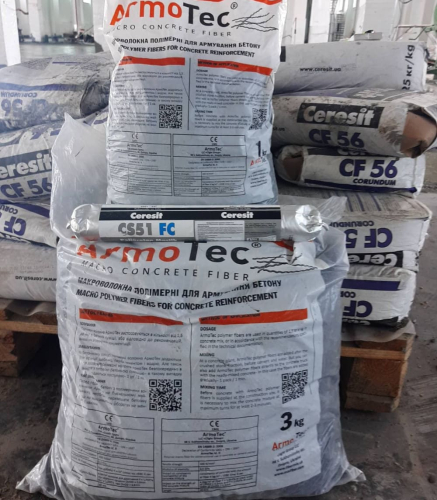 | 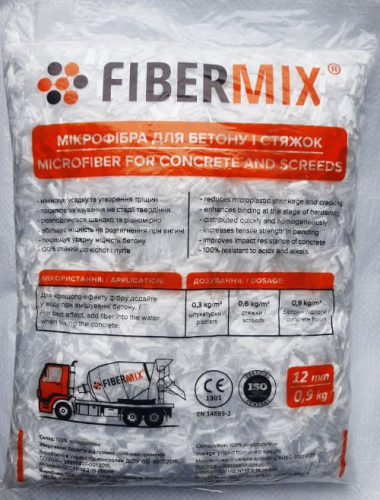 |
| Armotec Fibre | Fibermix Microfiber |